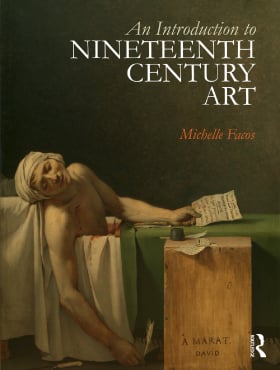Where do We Come From? What Are We? Where Are We Going?
Documentation:
Gauguin imagined what critics might think of Where do We Come From? :
“They will way that it is careless, unfinished. It’s true that it’s not easy to judge one’s own work, but in spite of that I believe that this canvas not only surpasses all my preceding ones, but that I shall never do anything better, or even like it. Before death [Gauguin claimed to have attempted suicide] I put into it all my energy, a passion so painful in circumstances so terrible, and my vision was so clear that all haste of execution vanishes and life surges up. It doesn’t stink of models, of technique, or of pretended rules – of which I have always fought shy, though sometimes with fear.”
Translated and excerpted in George Shackelford, Gauguin Tahiti (Boston: MFA Publications, 2004), 168.
Founder of Surrealism, writer André Breton (1896-1966), commented on Gauguin’s Where do We Come From? What Are We? Where Are We Going? :
“Without claiming to explain it, of course, I’m struck by how valid the fabric of Gauguin’s painting still is today, perhaps because of the universality of the questions it raises. It’s a kind of emotional ‘pattern’ from which the interplay of human anxiety and insane tranquility cuts its lights and shadows, which are constantly interfering with each other. Man is at the center, preoccupied with gathering fruit, which is life. Behind him a squatting figure, seen from behind – or as Gauguin said in a letter to [Henry de] Montfried, ‘an intentionally enormous figure, despite the perspective’ – watches amazed as two other figures pass, dressed in purple and ‘daring to ponder their fate.’ That’s more or less the state we’re in. The course of human existence unwinds on the painting from right to left, with its childishness, its grace, and the splendors that can make you forget everything – for starters, it’s the way one should live. As the same Gauguin said, ‘Everything takes place by a stream in the woods.’ Only carnal beauty and desire manage to blossom in that muted light, which brings us the sleeping child in the right-hand corner, and chases the old woman toward the left – the same woman (along with the others) whom Gauguin elsewhere gives the treacherous advice: ‘Be in love, and you will be happy.’ As if t were the result of a spiritual desertion, of the mind’s fundamental inability to meet the specific tasks facing it, love itself – to which everything here draws us, as a last resort – takes on a venomous character.”
André Breton, Conversations: The Autobiography of Surrealism (New York: Paragon House, 1993), 230-6. First published as Entretiens in 1952.
Albert Boime explains the source of Gauguin's title in the response of French mystic Eliphas Lévi to German natural scientist Ludwig Büchner's1872 explanation of evolutionary theory, Der Mensch und seine Stellung in der Natur in Vergagngenheit, Gegenwart und Zukunft:
"[Ludwig] Büchner's original German subtitle… was Woher kommen wir? Wer sind wir? Wohin gehen wir? (Whence do we come? Who are we? Where are we going? ), with each question heading a separate section of the book….Arranging these questions in catechetical order akin to his paradoxical queries in Histoire de la magi [History of Magic], Lévi proceeded to demolish Büchner's materialist philosophy:
…From whence do we come? - From the ape.
Who are we? - Perfected apes.
Where are we going? - Towards the reabsorption in universal matter.
What is our ideal? - A race of apes more perfect than ourselves….
Lévi terminated his satirical catechism by summing up his view of Büchner, 'All life is matter. That which exists exists without reason. The Universe is a joke and the life of humanity a brute fact more or less pretentious; of similar wild paradoxes there is no need or refutation – we laugh at them.'
Like Büchner and Lévi, Gauguin divides his explanatory text into a triadic structure organized around the three basic questions of existence. Less systematic than they, he nevertheless ultimately takes up each question in turn to arrive at a state closer to spiritualism than to materialism. Gauguin steers a middle course between Büchner's radical view of human descent from ape ancestors and Lévi's transcendent overview of the great mystery of human origins and spiritual growth. On the one hand, his grand painting, with its abundant flora and fauna, certainly exemplifies Büchner's thesis that human beings must be classified as an integral constituent of one vast zoological system. On the other, it appeals to a supernatural understanding of human existence given the presence of the idol in the background and the cyclical processes of destruction and renewal stressed by Lévi in his writings. Indeed, Gauguin borrowed his image of the idol from an illustration of an Indian pentacle in Lévi's Dogme et ritual de la haute magie [Dogma and Ritual of High Magic]; according to Lévi, the pantheistic Addha-Nari 'represents Religion or Truth, terrible for the non-believers and sweet for the initiates.'"
Albert Boime, "Gauguin's D'où venons-nous? Que sommes-nous? Où allons-nous?. Millenarianism and Necromancy in Fin-de-Siècle France," Revelation of Modernism. Responses to Cultural Crises in Fin-de-Siècle Painting (Columbia, MO-London: University of Missouri Press, 2008), 175-6.
About the Artist
Died: Atuona, Marquesas Islands, 8 May 1903
Nationality: French

 Buy the Book
Buy the Book